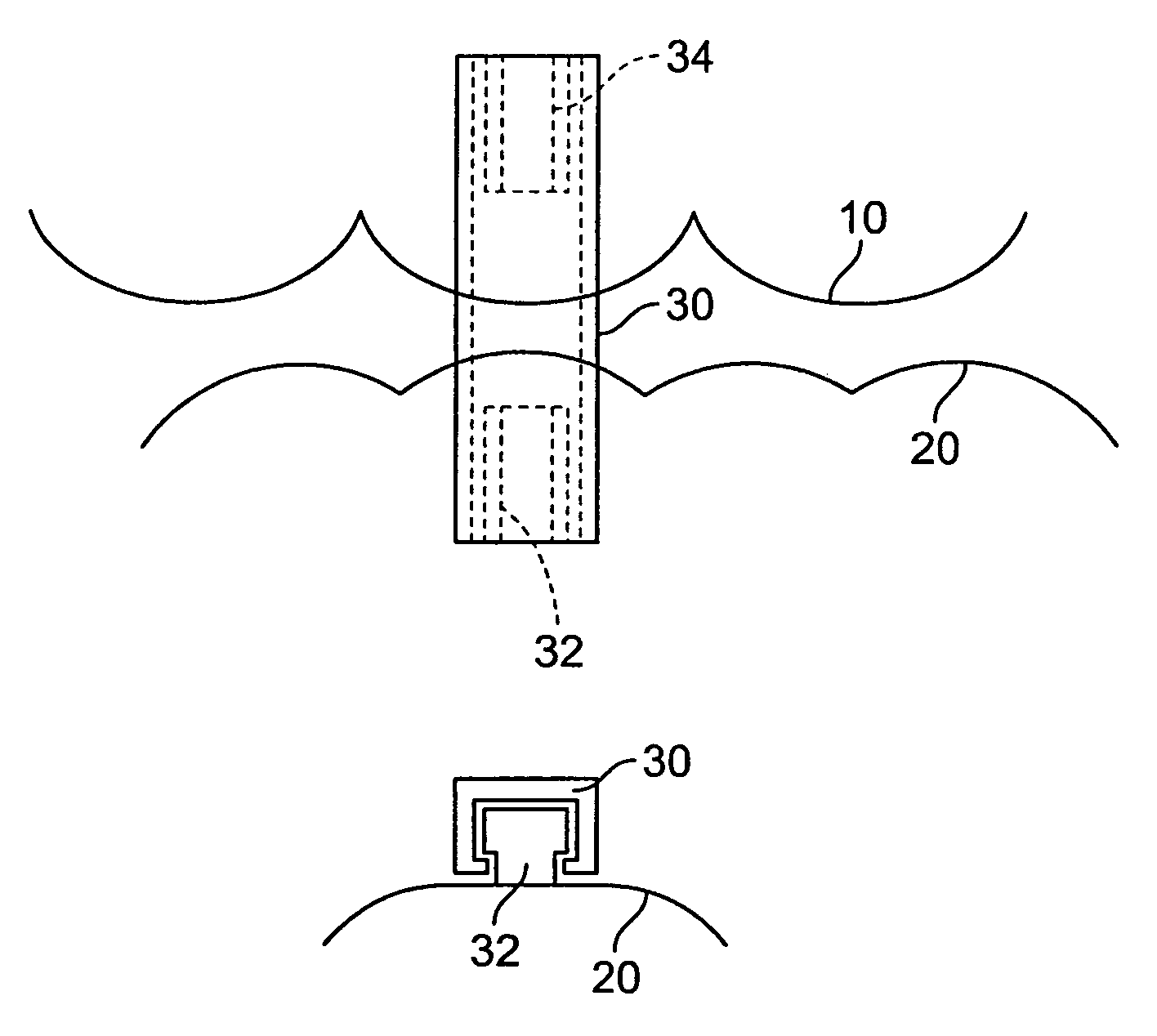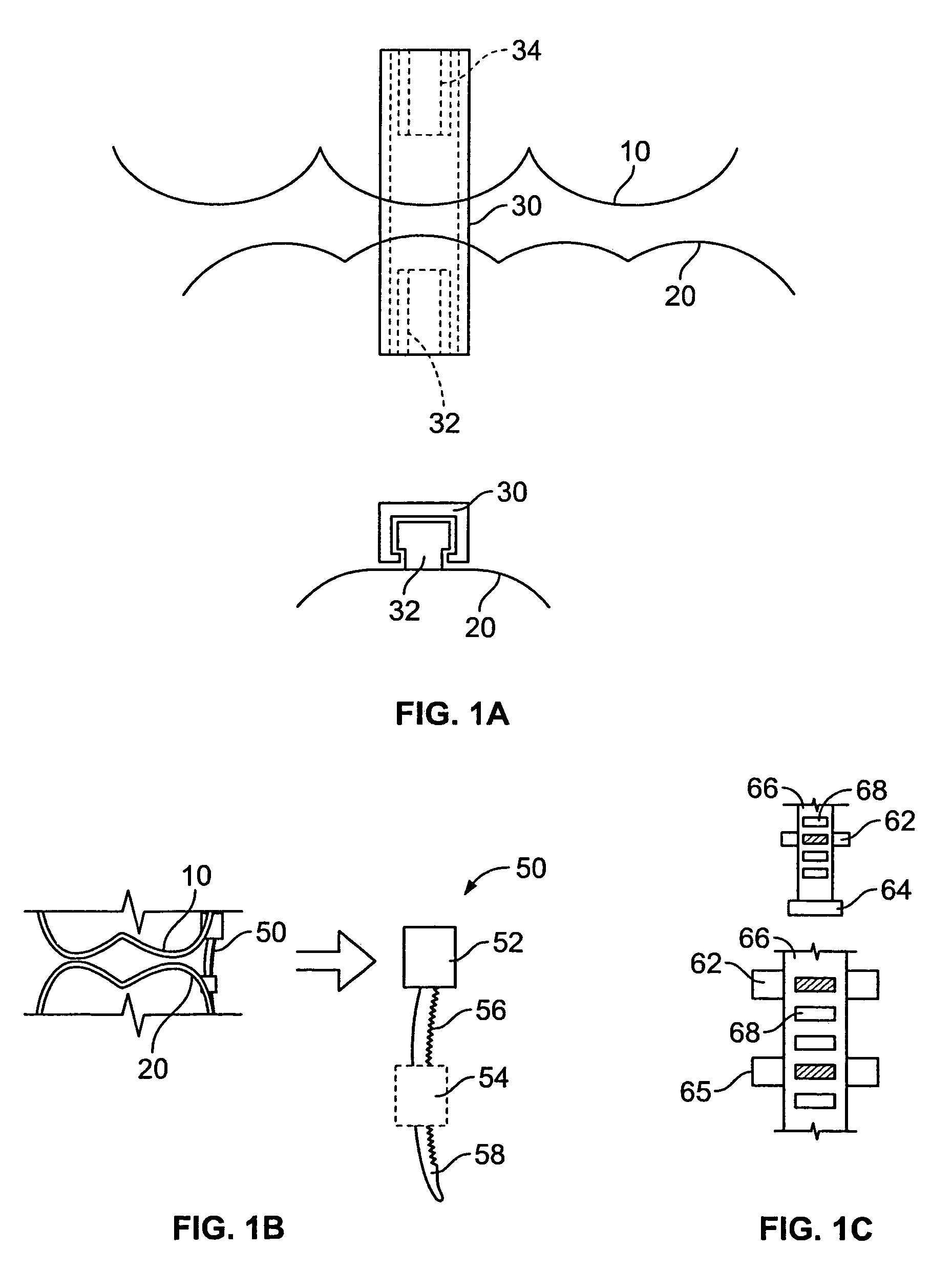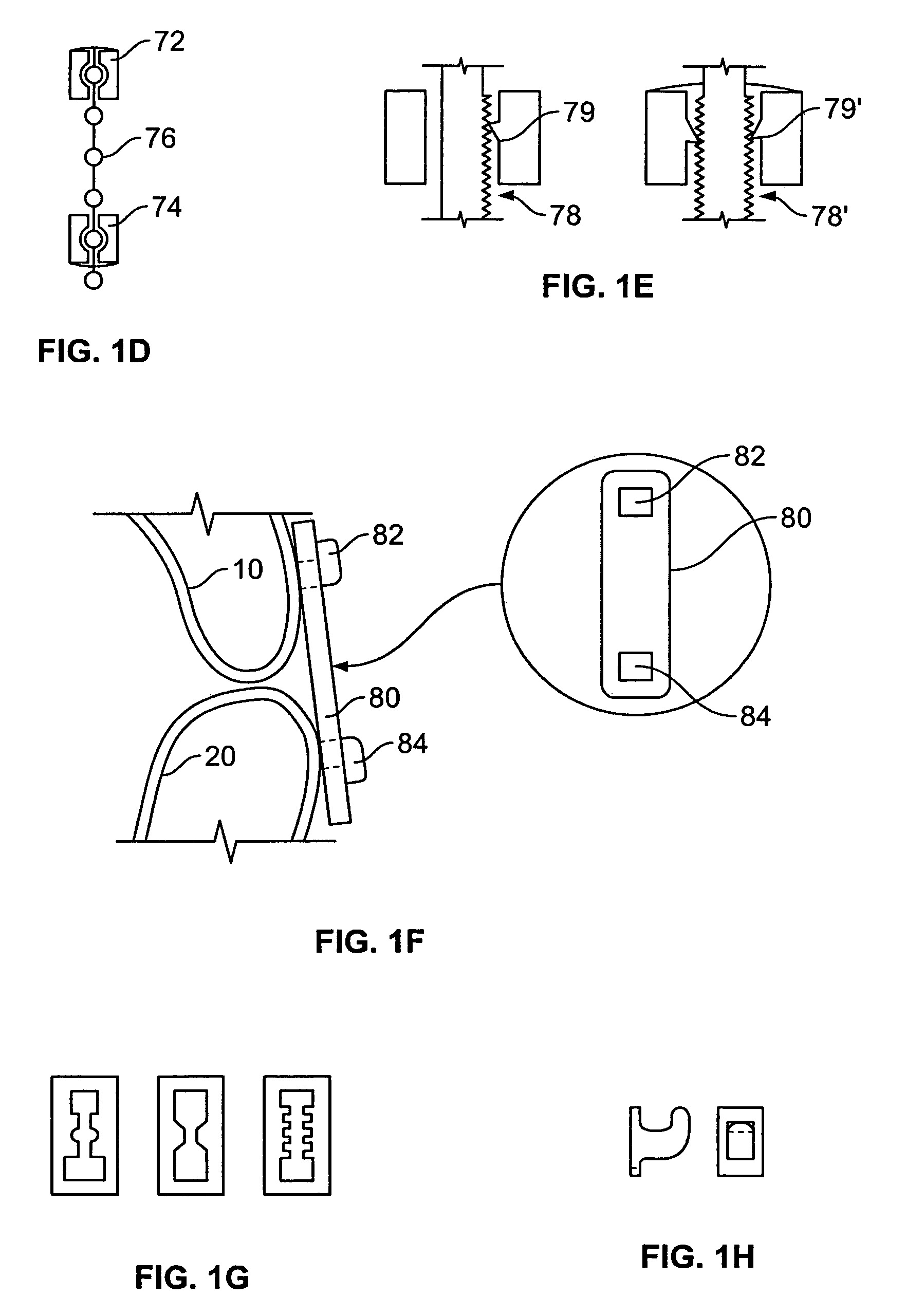Surgical dental appliance
a dental appliance and surgical technology, applied in the field of surgical dental appliances, can solve the problems of reducing affecting the accuracy of dental appliance positioning, and requiring surgery, so as to reduce the uncertainty of relative positions, quick remove the appliance, and facilitate the re-establishment of bite relationship
- Summary
- Abstract
- Description
- Claims
- Application Information
AI Technical Summary
Benefits of technology
Problems solved by technology
Method used
Image
Examples
second embodiment
[0026]FIG. 1B shows a connection member 50. In this embodiment, the connection member 50 includes an upper portion 52 affixed to the upper appliance 10 and a ratcheted portion 56. The upper and ratcheted portion 52 and 56 are one piece in one embodiment. A lower portion 54 is affixed to the lower appliance 20 and is a separate element. A section of 50 projects beyond the portion 54, and pulling on this section 58 brings the upper and lower appliances 10 and 20 (and by extension, upper and lower jaws) closer together and more firmly or solidly fixes their positions relative to each other.
[0027]Other similar embodiments include but are not limited to a ladder connection member (FIG. 1C), a bead connection member (FIG. 1D), and a pawl / ratchet connection member (FIG. 1E).
[0028]In FIG. 1C, an upper portion 62 is a separate element. The upper portion 62 has a base which is mounted on one of the appliances 10 or 20 and an extended portion which projects from the appliance. A ladder 66 has ...
third embodiment
[0032]FIG. 1F shows a third embodiment where the inter-arch fixation component is a rectilinear hasp 80 that snaps onto or over hook elements 82 and 84 to prevent relative motion between the upper and lower arches. The hook line elements also have a mainly rectilinear profile in the buccolingual direction. Rather, they are for engaging elastics when the hasps are removed. The hook elements are bonded to or embedded in the aligners.
[0033]The approximately intimate contact between the parallel sides of the hasp holes and the hooks prevents lateral shifting of the aligners relative to each other because the hasp holes cannot rotate about the hook elements. When a sufficient number (for example three or more) of these assemblies are placed on the dental arch form, the upper and lower arches cannot shift.
[0034]All other possible motion will be prescribed as well. When desired, the hasps may be easily removed by cutting them in one or more places. Various design iterations such as those s...
PUM
 Login to View More
Login to View More Abstract
Description
Claims
Application Information
 Login to View More
Login to View More - R&D
- Intellectual Property
- Life Sciences
- Materials
- Tech Scout
- Unparalleled Data Quality
- Higher Quality Content
- 60% Fewer Hallucinations
Browse by: Latest US Patents, China's latest patents, Technical Efficacy Thesaurus, Application Domain, Technology Topic, Popular Technical Reports.
© 2025 PatSnap. All rights reserved.Legal|Privacy policy|Modern Slavery Act Transparency Statement|Sitemap|About US| Contact US: help@patsnap.com



